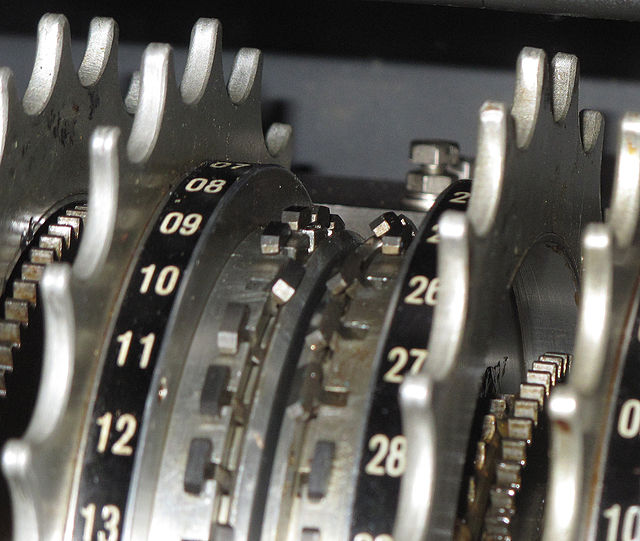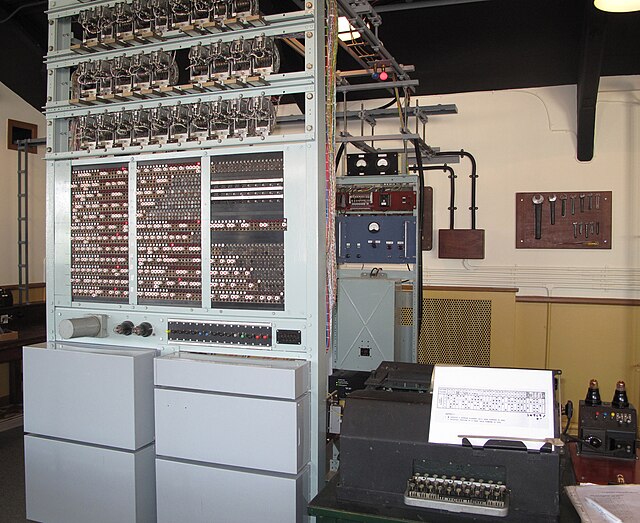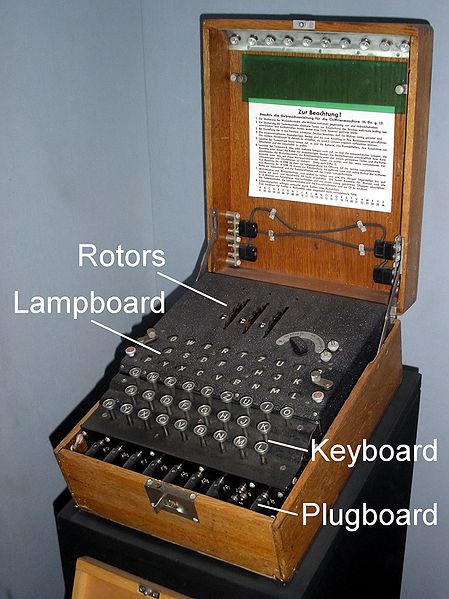The Lorenz SZ40, SZ42a and SZ42b were German rotor stream cipher machines used by the German Army during World War II. They were developed by C. Lorenz AG in Berlin. The model name SZ was derived from Schlüssel-Zusatz, meaning cipher attachment. The instruments implemented a Vernam stream cipher.
The Lorenz SZ42 machine with its covers removed. Bletchley Park museum
The Lorenz SZ machines had 12 wheels each with a different number of cams (or "pins"). OKW/Chi wheel name A B C D E F G H I K L M BP wheel name ψ1 ψ2 ψ3 ψ4 ψ5 μ37 μ61 χ1 χ2 χ3 χ4 χ5 Number of cams (pins) 43 47 51 53 59 37 61 41 31 29 26 23
Cams on wheels 9 and 10 showing their raised (active) and lowered (inactive) positions. An active cam reversed the value of a bit (0→1 and 1→0).
A rebuilt British Tunny at The National Museum of Computing, Bletchley Park. It emulated the functions of the Lorenz SZ40/42, producing printed cleartext from ciphertext input.
In cryptography, a rotor machine is an electro-mechanical stream cipher device used for encrypting and decrypting messages. Rotor machines were the cryptographic state-of-the-art for much of the 20th century; they were in widespread use in the 1920s–1970s. The most famous example is the German Enigma machine, the output of which was deciphered by the Allies during World War II, producing intelligence code-named Ultra.
40-point rotors from a machine made by Tatjana van Vark
A German Enigma machine
The rotor stack from an Enigma rotor machine. The rotors of this machine contain 26 contacts.
Typex was a printing rotor machine used by the United Kingdom and its Commonwealth, and was based on the Enigma patents.








